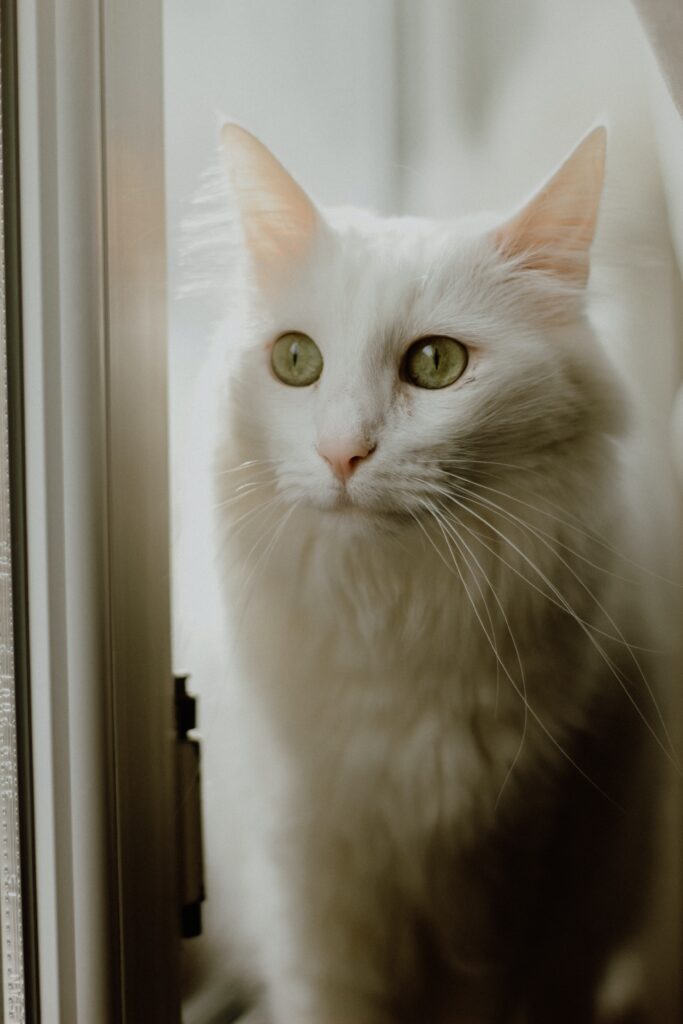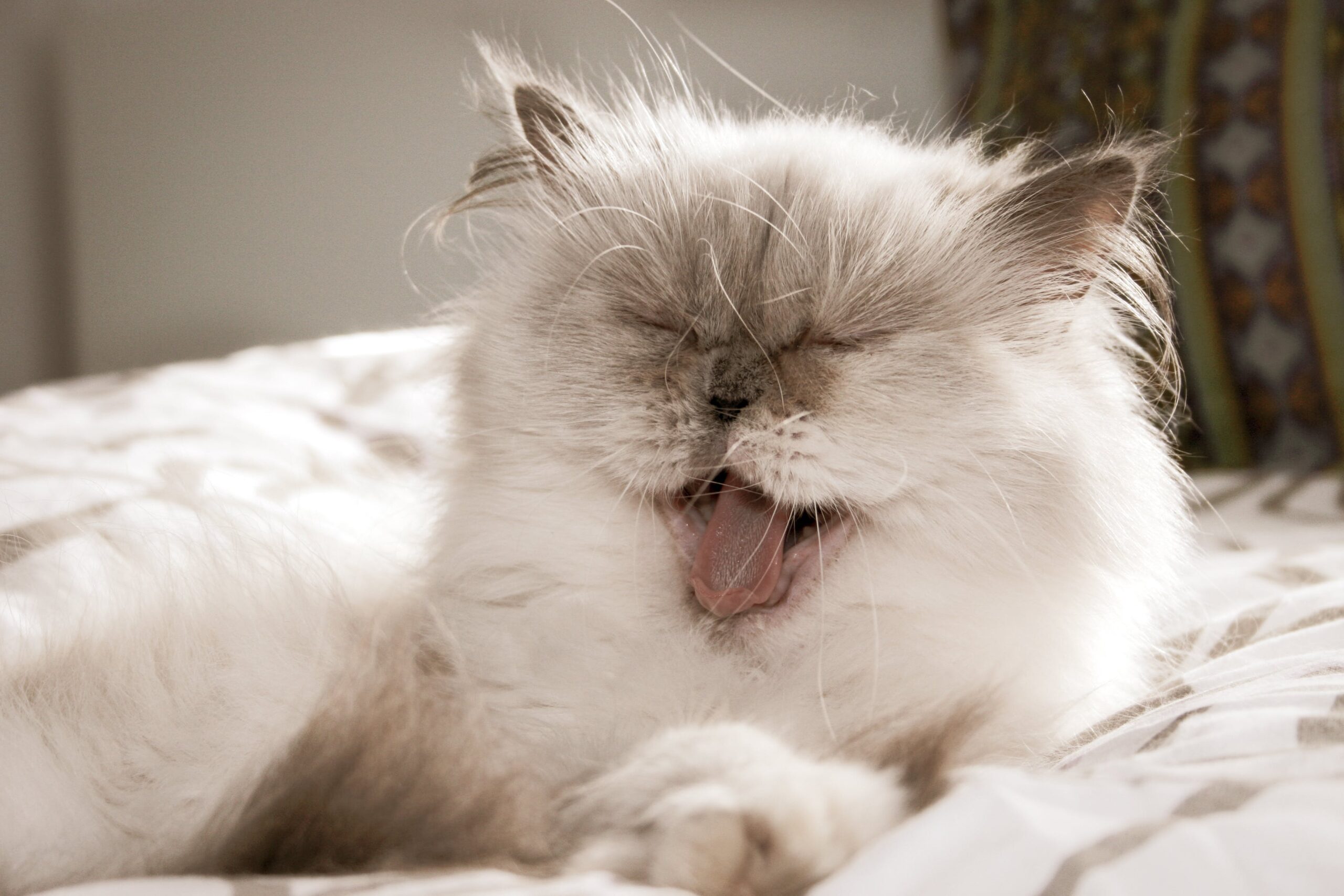The Felidae family of tiny, carnivorous animals includes cats. This family has no domesticated species other than them.
They climb trees, defend themselves, and seize food using their claws.
The Persian, Maine Coon, Siamese, and Ragdoll are a few common cat breeds.
Cats live 12–18 years on average.
you must brush your cat teeth at least 3-4 time in week.
Characteristics of cats:
- They are small, carnivorous mammals.
- They are the only domesticated species in the family Felidae.
- They have sharp teeth and claws.
- They are skilled predators.
- They come in a wide variety of colors and patterns.
- They are social animals and enjoy spending time with their owners.
Why do cats have teeth?
- There are several reasons why cats have teeth, including:
- Food: Since cats are obligate carnivores, they depend on meat for sustenance. Their teeth are made specifically to kill and consume animals. Their canines are long and pointed, piercing the skin and killing prey; their incisors are keen for holding prey; their molars and premolars are sharp and serrated, tearing and crushing meat.
- Grooming: To clean themselves, cats use their teeth to scrape away debris, loose hair, and parasites
- Defense: In order to protect themselves from predators and other dangers, cats also utilize their teeth. Those who assault might suffer severe injuries from their razor-sharp teeth.
how cats use their teeth:
- To kill prey, a cat will use its canines to bite the prey’s neck or head.
- To eat meat, a cat will use its premolars and molars to tear and grind the meat into smaller pieces.
- To groom itself, a cat will use its incisors and canines to nibble at its fur and comb through its fur.
- To defend itself, a cat will use its canines to bite attackers.
How many teeth do cats have?
Adult cats have 30 teeth:
- 12 incisors (6 top and 6 bottom)
- 4 canine teeth (2 top and 2 bottom)
- 10 premolars (6 top and 4 bottom)
- 4 molars (2 top and 2 bottom)
Kittens have 26 teeth At four to six months old, they begin to erupt their adult teeth, replacing their baby teeth. All of their adult teeth should be in by the time they are seven months old.
When do kittens start to grow teeth?
Kittens begin to erupt their newborn teeth between two and four weeks of age. First to erupt are the incisors, the tiny teeth located in the front of the mouth. The longer, sharper teeth next to the incisors, called canines, erupt next. The back teeth, or premolars and molars, erupt last in the oral cavity. By the time the kitten is seven weeks antique, all of its toddler tooth need to be present.
Kittens start to lose their toddler tooth at round four months vintage. The adult teeth come in behind the baby teeth, and the baby teeth eventually fall out. All of the adult teeth should be in by the time the kitten is 7 months old.
Here is a timeline of Cat teeth development:
- 2-4 weeks old: Incisors start to come in.
- 3-5 weeks old: Canines start to come in.
- 4-6 weeks old: Premolars start to come in.
- 5-7 weeks old: Molars start to come in.
- 4 months old: Kittens start to lose their baby teeth.
- 7 months old: All adult teeth should be in.
When do kittens lose their baby Cat teeth?
Kittens lose their newborn teeth about four months of age. The adult teeth come in behind the baby teeth, and the baby teeth eventually fall out. All of the adult teeth should be in by the time the kitten is 7 months old.
However, there is some variation in kitten teeth development. It’s feasible for some kittens to lose their newborn enamel finally than others. It’s also critical to take into account that a few kittens may also have extra enamel than typical, or much less than average. Please speak along with your veterinarian when you have any concerns regarding your kitten’s enamel.
Here are some recommendations to assist your pussycat accomplice all through the teething section:
Provide your kitten with plenty of chew toys. This will help to soothe their gums and relieve any discomfort.
- Avoid giving your kitten hard toys or bones, as these can damage their teeth.
- Brush your kitten’s teeth regularly. This will assist in removing the accumulation of plaque and tartar, which can cause gum disease and other dental issues.
- Take your kitten to the vet for regular dental checkups. This is especially important during the teething process, as the vet can monitor your kitten’s teeth for any problems.
How to brush cat teeth?
You will want a toothbrush with gentle bristles and toothpaste made specially for cats to be able to brush your cat’s enamel. Human toothpaste can be poisonous to cats, so keep away from the usage of it on them.
Instructions:
- Start by getting your cat used to having their teeth brushed. You can accomplish this by running a fingertip over their teeth and gums.
- You can introduce the toothbrush once your cat is at ease using it. Working your manner as much as brushing the interior of the tooth as nicely, start by means of brushing best the outside of the teeth.
- Apply toothpaste on the toothbrush in a pea sized amount.
- Use a circular motion to brush your cat’s teeth, being very careful around the gum line.
- Take two to three minutes to brush all of your cat’s teeth, if possible.
- Be sure to praise and reward your cat after brushing their teeth.
Try the following tips if your cat refuses to get their teeth cleaned:
- Start by brushing just a few teeth at a time, and gradually work your way up to brushing all of the teeth.
- Use a flavored toothpaste that your cat likes.
- Brush your cat’s teeth after they have eaten, when they are more likely to be cooperative.
- Make sure to praise and reward your cat after brushing their teeth.
Types of cat teeth
Incisors:
The tiny, pointed teeth in the front of the mouth are called incisors. They are employed in biting and nipping.
Canines:
Canines are the long, sharp teeth next to the incisors. They are used for puncturing and tearing flesh.
Premolars:
Premolars are the teeth between the canines and the molars. They are used for crushing and grinding food.
Molars:

Molars are the large, flat teeth at the back of the mouth. They are used for grinding food.
Functions of cat teeth
Eating:
Cats capture, kill, and consume prey with their teeth. Their canines are long and pointed, piercing the skin and killing prey; their incisors are keen for holding prey; their molars and premolars are sharp and serrated, tearing and crushing meat.
Grooming:
Cats clean themselves by brushing away debris, stray hairs, and parasites with their teeth. Their canines are used to brush thru their fur, and their incisors are used to gnaw at it.
Defense:
Cats additionally use their teeth to protect themselves from predators and other threats. Their sharp canines can inflict serious wounds on attackers.
Caring for cat teeth
What to look for in a dental chew
When choosing a dental chew for cat. Make sure that:
- Size: The chew should be large enough to be effective, but not so large that it is a choking hazard.
- Texture: The chew should be firm enough to scrape plaque and tartar off of your cat’s teeth, but not so hard that it damages your cat’s teeth or gums.
- Ingredients: The chew should be made with safe and healthy ingredients. Avoid chews that contain artificial ingredients, sugar, or grains.
- VOHC seal of approval: The VOHC (Veterinary Oral Health Council) seal of approval indicates that the chew has been clinically proven to reduce plaque and tartar buildup.
Here are some specific examples of dental chews that meet these criteria:
- Greenies Feline Dental Treats
- Purina DentaLife Advanced Clean Treats
- C.E.T. VEGGIEDENT® FR3SH® Chews
- OraVet Dental Hygiene Chews
- Virbac C.E.T. Enzymatic Oral Hygiene Chews
It’s crucial to remember that dental chews cannot replace brushing your cat’s teeth. They may, nevertheless, be a beneficial addition to your cat’s dental hygiene regimen.
Here are some additional tips for choosing and using dental chews:
- Choose a chew that is appropriate for your cat’s size and age.
- Give your cat one chew per day.
- Supervise your cat while they are chewing to make sure that they do not choke.
- If your cat does not seem to enjoy chewing, try a different type of chew or offer them a smaller piece.
When to take cat to the vet for dental care
if you notice:
- Bad breath
- Difficulty eating or drinking
- Drooling
- Pawing at the mouth
- Red, swollen, or bleeding gums
- Loose or missing teeth
- Blood in the saliva or nasal discharge
- Lesions in the mouth
These symptoms could be signs of periodontitis, gingivitis, teeth decay, or plaque and tartar buildup.
If those conditions are not handled, they could purpose principal health troubles like liver, kidney, or coronary heart sickness. Your veterinarian will observe your cat’s mouth and recommend remedies like extractions, professional cleanings, or other dental methods.
Even in case your cat does not show off any signs of dental problems, it is nonetheless vital to take them to the vet for dental care because those techniques can assist save you plaque and tartar buildup and decrease the risk of dental troubles. Here are some pointers for stopping dental problems in cats:
- Brush your cat’s teeth regularly, at least 3-4 times per week.
- Give your cat dental chews or treats.
- Feed your cat a high-quality diet.
- Take your cat to the vet for regular dental checkups.
You may additionally avoid dental problems and maintain the health of your cat’s teeth with the aid of heeding the advice in this article.
Cat Teeth Conclusion:
Adult cats have thirty tooth, and that they use them for some of functions, like as eating, grooming, and defense. It’s important to hold your cat’s oral health by way of giving them frequent dental examinations and brushings. By doing this, you may lessen the threat of plaque and tartar accumulation, that can cause gum ailment and different dental issues.
Tips for keeping your cat teeth healthy:
- Choose a dental chew that is appropriate for your cat’s size and age.
- Give your cat one chew per day.
- Supervise your cat while they are chewing to make sure that they do not choke.
- Feed your cat a high-quality diet.
- Take your cat to the vet for regular dental checkups.

